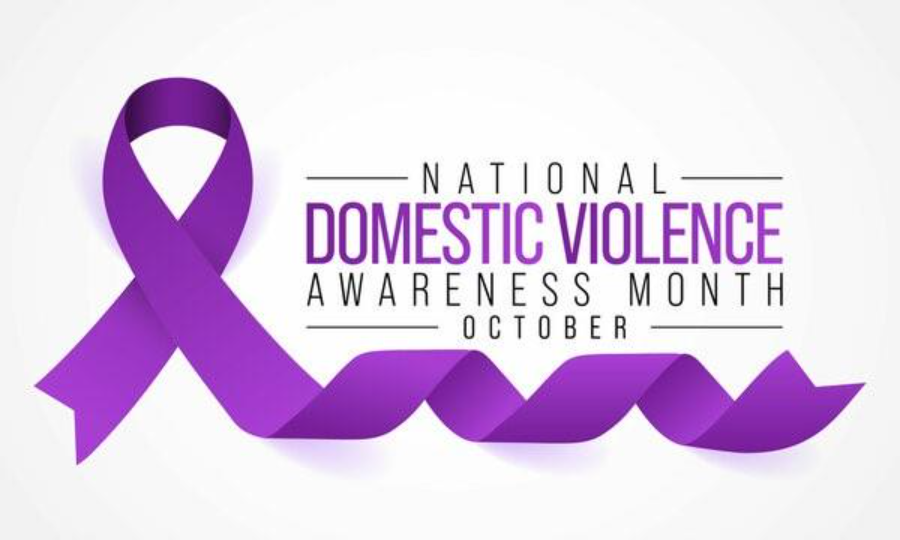Breaking the Silence: Understanding and Talking About Domestic Violence

- 1 in 4 women and 1 in 10 men have experienced contact sexual violence, physical violence, and/or stalking by an intimate partner during their lifetime. (National Intimate Partner and Sexual Violence Survey)
- 54% of transgender individuals experienced some form of intimate partner violence (IPV). (National Center for Transgender Equality)
- African American women experience IPV at a rate 35% higher than white women and 2.5 X higher than women of other races. (Women of Color Network)
- 1 in 3 Latinas experience IPV in their lifetime. (National Intimate Partner and Sexual Violence Survey)
- More than 4 in 5 American Indian and Alaska Native (AI/AN) women (84.3 percent) have experienced IPV in their lifetime. (National Institute of Justice (NIJ) Research Report)
- 1 in 5 of Asian or Pacific Islander women reported experiencing rape, physical violence, and/or stalking by an intimate partner in their lifetime. (National Intimate Partner and Sexual Violence Survey)

Below you will find definitions, conversation starters, and resources to Start the Conversation with the people in your life. When survivors know they’re not alone, they’re more likely to get the help they need. Talking more about domestic violence and resources is an important first step to ending it.
Understand the impact. Domestic violence impacts survivors in lots of different ways. It can cause survivors to be financially dependent on their abusive partner, isolate them from family and friends, and can have a serious impact on their physical and emotional health. If you want to set yourself up for the best conversation, it’s important to understand where survivors are coming from, how they might be feeling, and how domestic violence affects their lives.
Be ready. Once you’ve learned about the topic, think about who you want to talk to and the best way to talk with them about it (alone, with friends, in a group setting, etc.). There are many different people who can benefit from talking about domestic violence, the signs of it, and the resources available. You may need a different approach for each one.
Every conversation will be different. Sometimes these conversations can be difficult or cause tension. Don’t forget to take care of yourself throughout the process.
Make sure you’re heard. These conversations are important but can be hard for many people to talk about. Some people aren’t ready or may have difficulty hearing what you have to say. Remember to meet people where they are and know that you are making a difference just by bringing this topic into the light.
Understanding Domestic Violence
Domestic violence is a pattern of controlling behavior that may include physical, emotional, sexual, financial, or psychological abuse. It looks different in every relationship, but the goal is always power and control—not love.
Forms of abuse include:
- Emotional, psychological, sexual, financial, or technology-assisted abuse
- Spiritual or cultural abuse
- Stalking, threats, coercion, intimidation
- Isolation or use of children/pets to manipulate
The impact is wide-ranging:
- Physical: chronic pain, injuries, brain trauma
- Mental: PTSD, anxiety, depression, substance use
- Emotional: shame, fear, low self-esteem
- Financial: job loss, debt, homelessness
- Relational: isolation, broken trust, strained family ties
When we know what to look for, we are more likely to understand how to help survivors.
Start the Conversation
Learn how you can support the survivors in your life.
- Initiate a conversation in private and when you have enough time to talk at length, but only if they want to. The first step is always to Start the Conversation.
- Don’t label it. The words “domestic violence,” “victim,” and “survivor” can be overwhelming. Unless the person you’re talking to uses those words, it’s best not to mention them and instead talk about resources and support.
- Let go of any expectations you have that there is a “quick fix.” Not doing anything may very well be the safest thing they can do at any given time.
- Challenge false attitudes and beliefs that you may have about domestic or sexual violence.
- Believe victims and let them know that you do. If you know the person who has or is abusing them, it may be hard to believe that they are capable of abuse but remember that abusers typically act differently in public than they do in private.
- Listen to what they tell you. Avoid making judgments and giving advice. They will let you know what they need.
- Refer them to a service provider who can provide necessary medical attention, counseling or emotional support, safety planning, and housing, and discuss their options.
- Build on their strengths. Point out the ways in which they have been able to cope, solve problems, and show courage and determination.
- Validate feelings. It is common for victims to have conflicting feelings—love and fear, guilt and anger, hope and sadness. Let them know that these feelings are normal.
- Avoid victim-blaming. Tell the victim that the abuse is not their fault.
- Take it seriously. If you are concerned about their safety, tell them you are concerned without judgment by simply saying, “Your situation sounds dangerous, and I’m concerned about your safety.”
- Offer help. Offer specific forms of help and information, such as providing childcare, driving them to appointments, or assisting with pets.
- Give them control. Abuse and assault take control away from victims. Support their decisions about who to tell, what steps to take, and what types of support they need. Additionally, asking before offering any physical support such as hugs, and being upfront about what support you can and cannot provide allows them to take control of their safety and next steps.
- Support and respect their decisions. Remember that there are risks with every decision a victim makes and there is no one way an individual must react to abuse or assault. If you really want to be helpful, be patient and respect their decisions, even if you don’t agree with them.
What to Say
Domestic violence is hard to talk about. Here are some examples of how you can Start the Conversation:
- “I noticed that sometimes [insert partner’s name] does this [insert concerning tactic that you’ve seen]. Does that happen a lot? How does that make you feel?”
- “I’m concerned about your safety. Is it okay if we talk about it?”
- “I’m so glad you told me about [insert disclosure of abuse]. How can I help or support you? What do you need?”
- “I noticed lately that you’ve been [insert survivor’s behavior like “getting hurt a lot lately” or “not going out as much”]. Is everything okay? If you ever want to talk about it, I’m here for you.”
- “I know this can be really hard to talk about. I promise I believe you and won’t judge any of your choices or experiences. I care about you and just want you to be safe.”
- “I recently read/watched/heard [insert book, article, movie, podcast about domestic violence]. Have you read/seen/heard it? What do you think?”
- How do ‘traditional’ gender roles harm people?
- What do you think is the best way we can support domestic violence victims and survive
Important Definitions
Domestic Violence: A pattern of behavior used by someone to control their intimate partner. The behavior includes abusive threats and actions that may or may not be criminal. These behaviors may include physical, emotional, financial and sexual abuse.
Gender-Based Violence: Violence or threats that happen because of someone’s sex, gender, sexual orientation, gender identity or expression, or other related characteristics.
Consent: Fully formed, freely given, and enthusiastic permission for what someone is okay with in relation to their body. A person cannot give consent if they are being physically forced, guilty, manipulated, threatened, or coerced.
Consent can be taken back at any time and is not based on relationship status or consent given in the past.
Consent cannot be given if the person is underaged, incapacitated, sleeping, physically helpless, or has certain disabilities.
Sexual Violence: Sexual violence includes sexual acts or activities that happen without consent. This may include rape, sexual assault, and sexual abuse. Sexual violence includes different types of unwanted physical contact including rape, molestation, groping, sexual abuse by an intimate partner and child sexual abuse, which may or may not be criminal.
Sexual Assault: Unwanted sexual contact through physical force, threats, guilt, manipulation, or coercion with the goal of establishing power and control. Some victims are assaulted by strangers, but most know their attacker. It may be a current or former intimate partner, a friend, an acquaintance, or a family member.
Rape: A type of sexual assault with actual or attempted penetration of the vagina, anus, or mouth without the consent of the victim.
Sexual Harassment: Unwanted verbal or physical sexual advances, sexually explicit statements, or discriminatory remarks because of the victim’s sex. Examples include requests for sexual favors, sexual comments or questions, offensive remarks about a person’s sex or gender identity and expression, and unwanted messages or images that are sexual in nature.
Sexual Abuse: An ongoing pattern of unwanted sexual contact with the goal of establishing power and control. Sexual abuse usually occurs when the victim has less power than the abuser, such as a caretaker of a person with disabilities or an adult and a child.
Rape Culture: An environment with cultural norms, stereotypes, and institutions that contributes to sexual violence, while ignoring the realities of sexual violence. The impact of rape culture is different for everyone but occurs across sex and gender.
To learn more about domestic violence and support visit the National Domestic Violence hotline at https://www.thehotline.org/ or call 1.800. 799.SAFE






